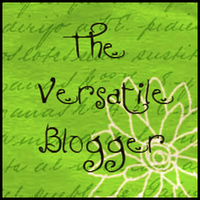The Necessity of Diverse Voices in Theatre Regarding Disability and Difference. Excerpt from an essay for Howlround:
Theatre could be defined as the study of what it is to be human. For millennia we have come to sit communally—a group of human beings watching another group of human beings pretending to be other human beings. We are endlessly fascinated with each other, yet a place purported to be about the range of human possibility has for too long been circumscribed and limited, especially towards almost a fifth of the population. Statistics vary, depending on definitions of “disability,” but the World Health Organization estimates 15 percent of the world population as being disabled, whilst a 2012 US Census Bureau estimate brought the figure in at just over 19 percent of the American population.
For thousands of years in the Western theatrical tradition, the atypical body has been used to scare, warn, explain, and explore human frailty, mortality, and the human condition. Disability has been a metaphor for the non-disabled to explore their fears and embedded societal values.
Since the Ancient Greeks disabled characters have appeared in plays, but seldom have the writers been disabled or written from that embodied or political perspective. The vast majority of disabled characters in the Western canon are tropes, and not only that, they reify notions of “normalcy” rather than broadening the lens and embracing all the possibilities of human variety. These misrepresentations are so prevalent in Western culture that negative representations of impairment and associations have become ingrained. Strange untruths have therefore been created and recycled in our dramas for stage and screen, and the rich, rewarding reality of disabled peoples’ lives has been replaced with problematic representations which work to keep us different, “special,” and apart. This “othering” of difference (which also includes sexual preference, cultural heritage, belief system, and so on) provides a “useful” slide rule against which notions of “being normal” and “fitting in” can be measured. These distorted ideas enshrined in our entertainment media legitimize the negative attitudes that can lead to discrimination and hate crime.
Richard Rieser in his teaching guide to disability and moving image media, published by Disability Equality in Education, gives an example of how the limited narratives and visual lexicon impacts on people’s consciousness and actions. He focuses on Disney’s Hunchback of Notre Dame, noting how after its release in the UK the previously archaic term “hunchback” reentered common parlance as a derogatory term directed at disabled people. At the same time, The British Scoliosis Society complained to the then minister of Disabled People, Nicholas Scott, about a sudden increase in violent physical attacks against its members—over 100 attacks in the six months following the film’s release, when in the six months previous to this, there had been none.
Images and narratives in our entertainment media help form the mirror reflecting our society, through which, it could be argued, we gain a sense of community, morality, and self. Without a diversity of voices, perspectives, and experiences, prevailing negative attitudes and values remain entrenched and go unchallenged.
Thankfully change is coming, albeit slowly, with more disabled and d/Deaf artists coming to the fore across art forms. This is partly the fruit of the UK and US disability civil rights movements, out of which disability arts and culture grew, and the disability arts forums, organizations, and festivals that supported and still encourage this growth. In the UK it is also down to initiatives such as Unlimited, a funding strand keen to promote, commission, and implant the work of disabled and Deaf artists in the “mainstream” on a level never experienced before.
As a playwright and dramaturg who identifies as disabled, I have been working for several decades across and between so-called “mainstream” culture and what I coin “crip” culture, informed by the social model of disability. I consider disability a social construct—I am a woman with a sensory and physical impairment, but it is society’s attitudinal and physical barriers which is disabling, not the idiosyncrasies of my body.
In my work I am interested in creating new protagonists, with different narratives, and with different endings—and to challenge and expand the actual theatre languages at play in live performance through my engagement with the aesthetics of access. I believe reimagining disability opens up creative possibilities in aesthetics, form, and content—changing the stories we tell, how they are told, and the people who tell them.
To read the rest of the article, please go to Howlround
This essay first appeared on 2nd July 2017 at: http://howlround.com/the-necessity-of-diverse-voices-in-theatre-regarding-disability-and-difference

